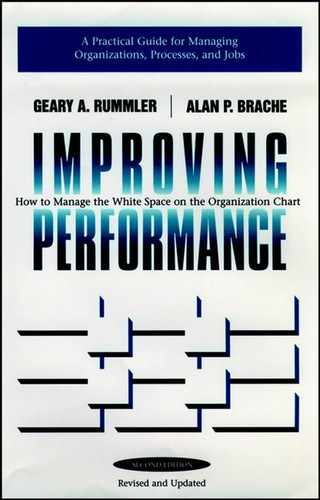Chapter 8. MOVING FROM ANNUAL PROGRAMS TO SUSTAINED PERFORMANCE IMPROVEMENT
Beware, lest you lose the substance by grasping at the shadow.
—Aesop
At most large and medium-sized organizations, top managers like to embark on performance improvement programs. These programs tend to have a focal slogan, which includes terms like quality, customer service, reengineering, and teamwork. They tend to be launched with a great deal of publicity. They are initially supported by a large expenditure of resources (often cited as a symbol of significant support from top management).
Unfortunately, betterment programs frequently end up grasping at the shadow, rather than establishing an infrastructure for substantive, sustained performance improvement. To wit, here is an excerpt from an issue of a Fortune 100 company newsletter:
With the presentations recently of two quality teams, the program closed its ledger and ended. From the five pilot teams, the program grew to 327 teams. Ninety-three presentations included cost savings. During its existence, the program became an integral part of the philosophy of participative management. It provided both tangible and intangible results, such as developing problem-solving, leadership, and communication skills.
When it initially became clear that U.S. involvement in the Vietnam war was a no-win proposition, Vermont's Senator Aiken proposed that America declare victory and withdraw. Similarly, this company counted up the number of teams and recommendations, declared the quality program a success, and shut it down.
A human resource development professional in this organization (displaying rare commodities—memory and perspective) developed a family tree that positions the quality team program as one of thirty-six productivity, quality, participative management, and culture change programs his company has embarked on in the last ten years. Each of them began with impressive fanfare, lofty expectations, and large budgets. Most are now dead or comatose. It is no surprise that, in this organization, the prevailing employee reaction to any new management initiative is what management consultant Chris Hart (1987) calls BOHICA—Bend Over, Here It Comes Again. After ten years of programs, employees perceive the organization, with only a few pockets of exception, as the same old place.
The short-term financial perspective of U.S. business has been thoroughly documented and castigated (with little effect) in a number of books and articles during the last few years. This shortness of attention span extends to organization improvement as well. Perhaps American management's impatient search for the magic bullet is at the root of its impressive record in entrepreneurship and product innovation. However, when it comes to substantive, sustained gains in performance, there is no magic bullet.
In our experience, even the most effective training programs and organization development interventions tend to offer only one or two of the many pieces of the performance puzzle. We have found that any improvement effort—whether it is driven by quality, customer focus, productivity, cycle time, cost reduction, or even culture change—is effective only to the degree that it encompasses the Three Levels of Performance.
